tags: I and the Bird, blog carnival, birds, birding, bird watching
Welcome to Birds seen on the other side of the Century Mark!
This is a short photoessay published by Duncan, sharing some of the wonderful birds in his backyard. My favorite? That very cute little Silvereye.
Liza doesn't need to say much in this contribution: her photographs tell all (and of course, I am extremely jealous of the quality of those images!)
Patrick went out specifically to find a White Ibis, but the first thing you see when you click on this link is a breathtaking picture of a yellow warbler, and I do mean gorgeous! But did he manage to spot a White Ibis? You'll have to read the essay to find out.
My good friend, Rick, sent along this photoessay about his sighting (and photographing) of a Black-capped Gnatcatcher in southeast Arizona. Apparently, this cute little species is expanding its range northward (gee, i wonder why?) and is being seen a little more often in the United States as a result.
This is an odd contribution that contains some really nice photographs, a bird list and a very peculiar essay .. yes, I think it's an "in joke."
Okay, mystery bird fans, this amusing photoessay has some pictures of birds that the author has tentatively identified .. do you agree with Susannah's IDs? If not, let her know; she'd probably like to add a new species to her Life List.
This lovely photoessay is filled with astonishing digiscoped pictures of South American birds. Gunnar gave this the appropriate but understated title, LBJs in Peru are Pretty. Wait until you see his picture of the Golden-backed Mountain-Tanager -- is that an LBJ? I don't think so!
Elizabeth shares some photographs and natural history notes about one species of birds in her backyard; pygmy nuthatches.
This essay is contributed by Mama Joules, a beginning birder, where she describes her beak-to-nose encounter with a woodpecker. What species was it? Ah, this essay is a valuable reminder that everyone was a beginning bird watcher at one time, although I know quite a few people who refuse to admit to this.
Alan sent in this photoessay that is filled with birdy and dragonfly goodness! My favorite picture is the female Eastern Bluebird brooding her eggs inside a "Williamsburg Bird Bottle."
My friend, John, recently took a train to NYC where he met a group of twittering birders and they went bird watching in Central Park. He lists a few of the species they saw and links to a blog entry that provides more detail about the adventure. I have often wondered how many people use twitter while birding, since it seems the perfect tool to use in the field, especially while searching out specific rarities.
Laura's gorgeous camera has apparently ruined birding for her. I'll admit that, if I had her camera -- a digital SLR Nikon D90 with 70-300 mm lens -- it would ruin birding for me, too.
Which category should this photoessay go into? It features traveling to far flung areas -- in this case, Khazakstan -- to list new species as well as using new technology -- in this case, a new magnesium telescope that was outfitted with a new 25-50X wide angle eyepiece. Well, technology won out this time, since this photoessay was filled with digiscoped images of birds for you to look at.
This essay discusses ejection of two eggs observed at an Eastern Phoebe nest after it was parasitized -- twice -- by cowbirds. This behavior was recorded on a streaming video feed that the author reviewed after the event to determine if the Phoebe or a Cowbird removed two eggs from the nest, and when.
This interesting photoessay describes bill wrestling in several species of Hornbills and speculates as to the purpose for this behavior. The essay includes some really spectacular photographs and references to the primary literature.
There's trouble in Cyprus: recently, Sardinian Warblers have apparently been pushing endemic Cyprus Warblers out of some of their range. Unfortunately, Cyprus Warblers have a very restricted range so this loss of their natural range to this invasive species could change their conservation status fairly quickly. However, this research has not been updated since the original paper was published in 2002 -- much could have changed in that span of time!
This image-heavy contribution features the fishing behavior of a Great Egret. It also includes video, so be patient and allow this entry to load because it'll be worth the wait.
Carrie discovered a cedar waxwing that had flown into a window and knocked himself (or herself) stupid. The most remarkable aspect about Carrie's adventure is the nasty reaction that she received from various people. I'd like to add my voice to the chorus: you did the ethical thing, Carrie -- something I've done before and would do again in a heartbeat. People impinge upon bird habitat everywhere, and the least we can do is to undo some tiny portion of the damage that we cause because of our selfishness and arrogance.
This is one part of a series of blog entries about a crow named Espresso (you can see the other stories by browsing around the linked blog). When this bird was a youngster, he (she?) apparently adopted the author, Michael, who returned the favor by telling stories about him.
This short essay discusses a pair of Northern Cardinals and how the author, Carole, feeds them, along with providing some really nice photographs for you to look at.
This lovely photoessay documents the drawings by the artist, Jo, who braves biting blackflies to go into the field and draw several gorgeous East Coast warbler species from life. I especially love her face-on drawing of the Magnolia Warbler .. it's just so round!
Vickie sent this photoessay of an American Robin nestling that fell from its nest and was crouched silently among last year's dead leaves on the forest floor. It was being fed by its parents, especially the father, who were none too pleased to see her lurking about in the bushes with her camera. She finishes this contribution with her sweet little drawing of that particular nestling.
Northern Mockingbirds have the remarkable ability to tell the difference between individual humans, regardless of the clothes they wear. After less than a minute, the birds can tell one person from another and adjust their responses according to the threat they pose to its nest. This ability suggests that these birds are both intelligent and very flexible in their behavior -- two traits that must surely stand them in good stead in the urban jungle.
This is an appeal to birders, asking us to help the USGS bird phenology program of sightings and observations reported by citizens and scientists from the 1880's through the 1970's. They have six million cards, people, surely you can help out by transcribing a dozen of these cards, and who knows? Maybe you'll get lucky and find a card written by a famous person?
Janet shares this photoessay of her encounter with a black vulture who was unwilling to share his breakfast of dead raccoon with her. A birding friend saw her stalking this bird in an old corn field and joined her, so she shares some images that they each snapped that morning.
This brief essay by my friend, Rick, discusses the link between the "butterflies of the bird world" (the Neotropical warblers) and Nathan Leopold's eventual authorship of the Checklist of Birds of Puerto Rico and the Virgin Islands.
Despite the assertions of naysayers like me, some bird lovers still believe that the Ivory-billed Woodpecker "is out there somewhere." In this essay, one of those believers, Cyberthrush, discusses Ivorybill Politics, and includes a link to the primary literature so you can follow up.
Last but not least, here's an update on some images I published awhile ago about a blue House Sparrow that was photographed in a backyard in Sydney, Australia -- I've been forgetting to send these photoessays in to this carnival, so here they are, finally.
This concludes my edition of I and the Bird. The next issue of I and the Bird will be hosted by The Birder's Lounge on 11 July 2009 -- in two weeks. If you would like to submit your essays, photoessays and photography of wild birds to this next edition, please send the URLs and a brief summary to Mike and he'll be sure to pass them along. I would like to thank everyone who sent a contribution to this blog carnival; I could not have done it without you!


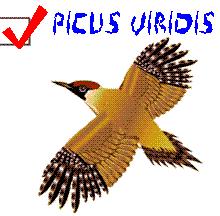

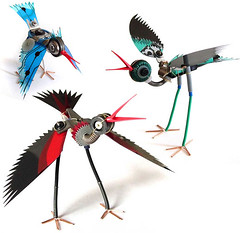
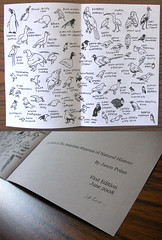
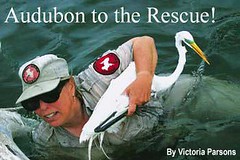
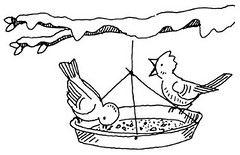
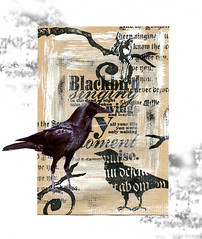

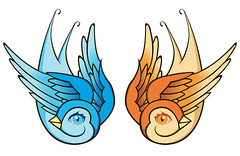
This sounds like it will be another great edition of IATB. Looking forward to it. :-)
Nicely done. Thanks for hosting.
Great IaTB! Can't wait to read all those posts that I just opened! Thanks for putting it together!
Great IaTB! Can't wait to read all those posts that I just opened! Thanks for putting it together!
Thanks for hosting another great IATB! I really wanted to do a more scientific post for you but didn't have enough time for the research needed. Ya know that scientific stuff takes a lot of time! Maybe next time.
Thanks again for putting it all together for us. I am looking forward to reading all the excellent posts!
Thank you!